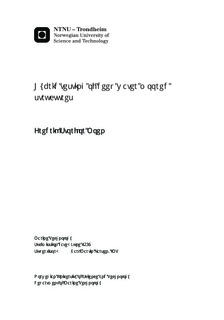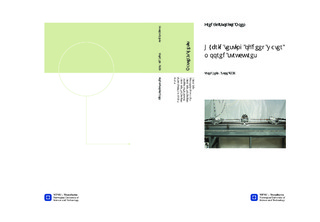| dc.description.abstract | This thesis presents a design concept for deep water model testing of moored floating offshore structures in ocean basin, and presents a single degree of freedom (SDOF) test setup for this purpose. Conventional methods has limitations in the ocean basin with regards to depth and scaling. The model scale should therefor not be larger than 1:40. A test facility with 10 meters depth will not be able to have full scale depth larger than 400 meter. Ultra small scaling smaller than 1:150 should also not be preferred, which leads to a full scale depth of 1500 m in ocean basin. Conventional methods has its limits in prediction of responses caused by environmental loads. For floaters the wind and higher order wave effects excite loads in range of the eigen frequencies of the structure for the in-plane motion. These resonant responses are more important for deeper water. Damping, restoring forces and all nonlinear effects should be adequately represented in the model test. Mooring lines and riser are important for damping and the nonlinear restoring, thus these factors must be included in the model tests.
This thesis focus on building a test setup , which can be used for deep water moored structures model testing, using both control systems and traditional systems. The aim is to have the correct restoring stiffness, mooring line dynamic, forces and moments on the model. The resulting forces are calculated with real-time software using a non-linear finite element model (FEM) in time domain. Real-time testing puts demands on communication and numerical solver efficiency and speed, thus it is important in order to not introduce any time delays that may cause uncertainties.
The test method presented is a simplified SDOF motion for a floater in surge. The test setup will use a linear spring with similar natural period in surge for the floating vessel, and actuator forcing will substitute the nonlinear spring stiffness for the restoring characteristics, based on displacement of the floater in real-time analysis. This method will use less possible forcing from the actuator by choosing line stiffness close to the model scale restoring characteristic. A literature study on this subject based on earthquake civil engineering results in active hybrid testing methods, show promising results for this concept applied on structural engineering problems. Traditional model testing methods use results from model tests and extrapolate to full scale after the model tests have been conducted. This method is not able not predict all effects and uncertainties are introduced.
Results from a SDOF setup using actuators with a non-linear software, show suitable results for the concept further development, and use of actuators for representing deep water mooring lines. However limitations on the simplified model introduced more damping on the model than a model in ocean basin. The design of the systems communication between FEM analysis tool and controller for actuators is suitable for real-time hybrid model testing (RTHMT), time delays is small. The presented test setup can easily be implemented to testing of a model of water, and the concept can be used for other translations as well. | |

